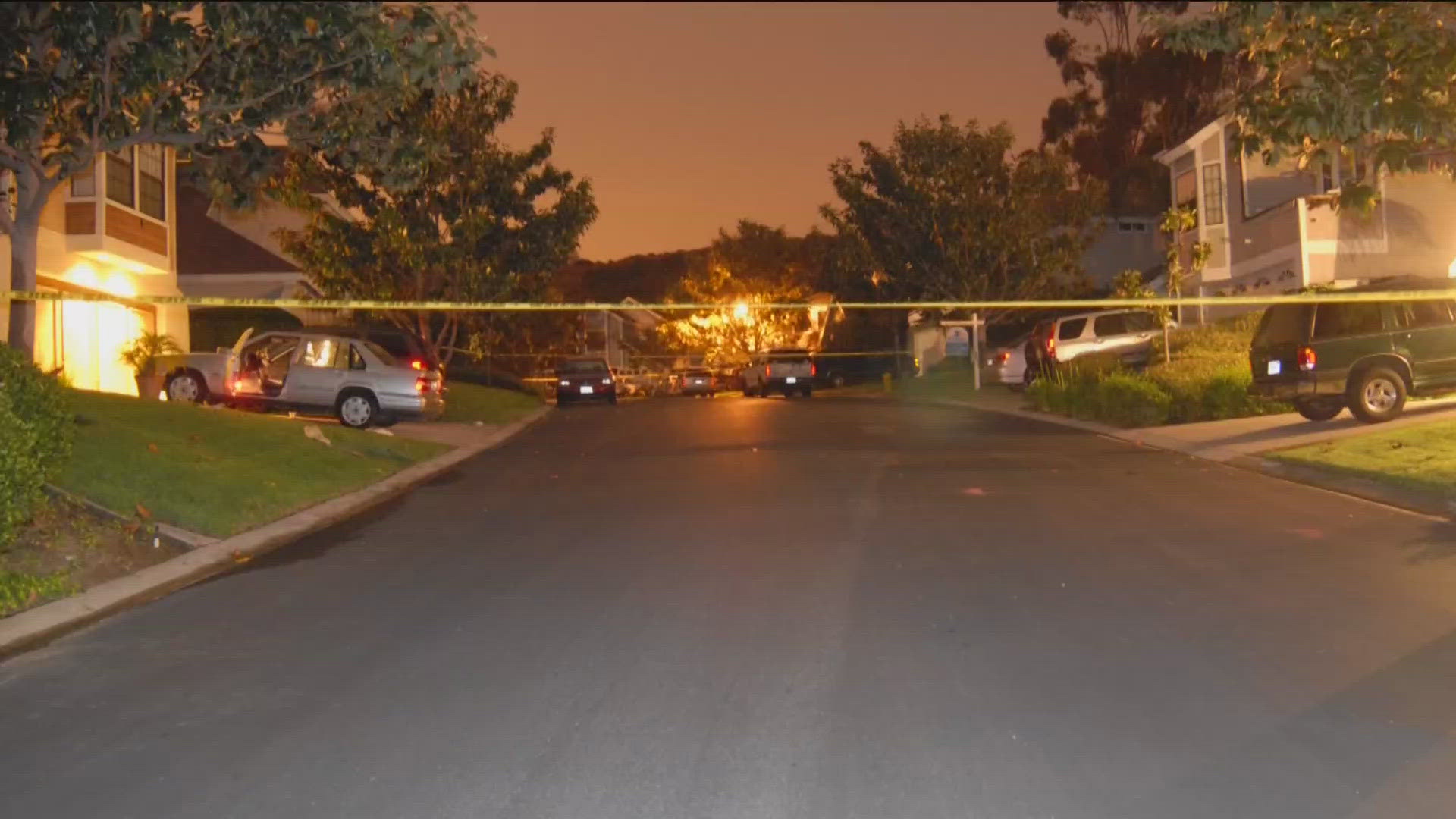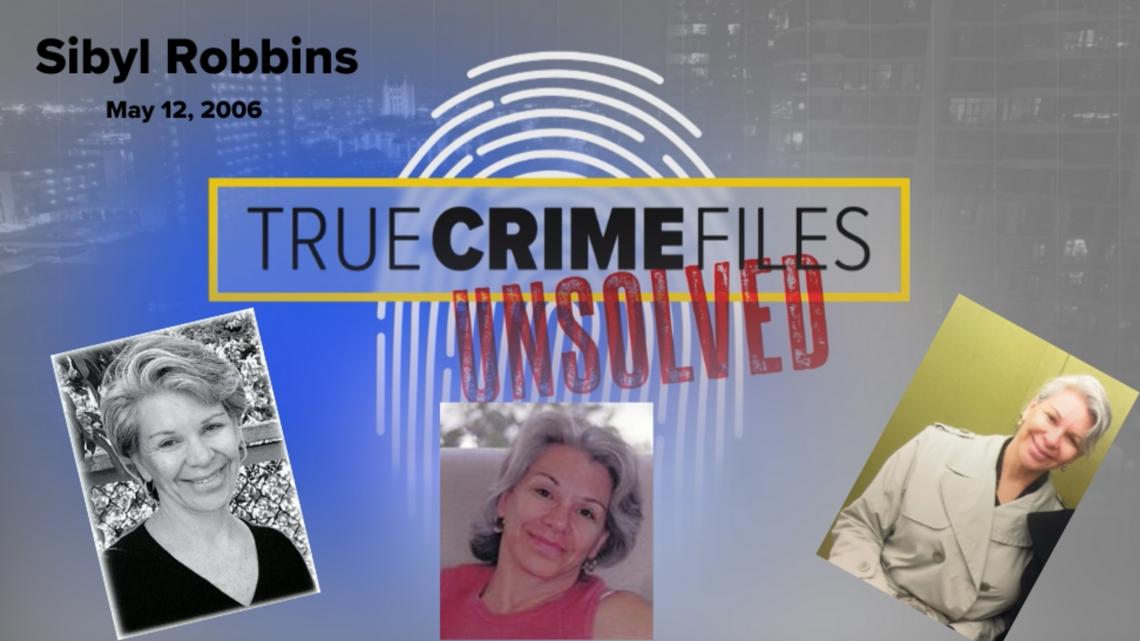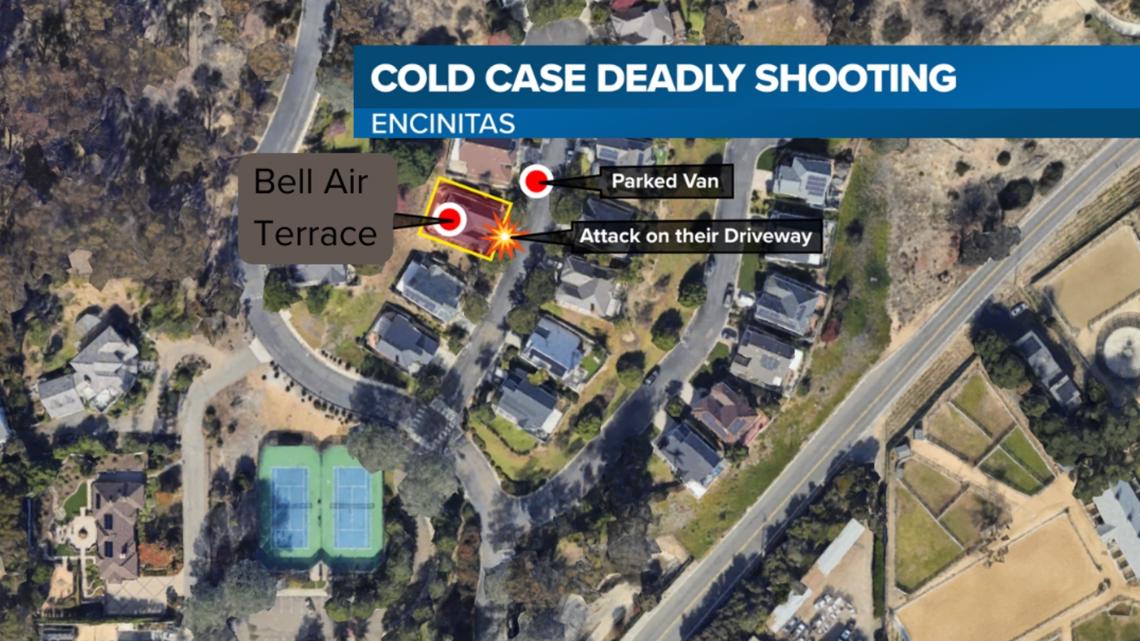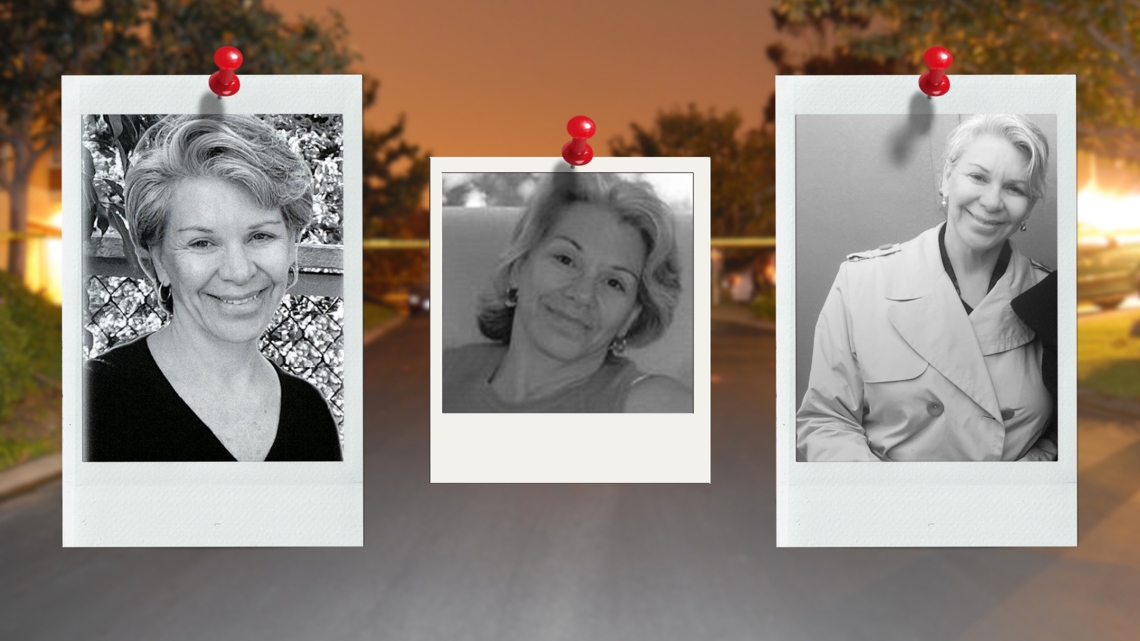The unsolved murder of Sibyl Robbins | True Crime Files
May 12 will mark 18 years since Sibyl was murdered in the passenger seat next to her husband. San Diego Sheriff's cold case unit continues to search for her killer.

Dr. Harrison Robbins and his wife Sibyl Robbins lived a quiet life.
He was a cosmetic surgeon, she ran the front desk of his practice.
On May 12, 2006, three gunshots turned the quiet to unsettlingly tragic.
It was on that Friday night, just after 10:30 p.m. when the couple pulled into their driveway at their home on Bel Air Terrace in Encinitas and were met by a gunman.
Within seconds, the 56-year-old mother of five, Sibyl Robbins, was dead from a gunshot to the head. Her husband was shot in the hand and face but survived.
The gunman remains on the loose.
Just days shy of 18 years since the shooting, CBS 8 looks at one of San Diego County Sheriff's unsolved murder cases and new information that may help detectives crack a decades-old murder.


Quiet cul-de-sac transforms into a crime scene
Since 2000, police have received 80 emergency calls for service to Bel Air Terrace in Encinitas. The majority of 911 calls were car alarms, house alarms, burglaries, or thefts.
Averaging only three 911 calls per year, the small Encinitas enclave featuring tightly packed rows of two-story homes with manicured lawns and freshly paved streets appears straight from a movie scene.
The Robbins, a successful cosmetic surgeon, and the office administrator-wife fit the neighborhood's narrative perfectly.
That changed at around 10:30 p.m. on May 12, 2006. The couple returned home after a trip to their synagogue and dinner at El Torito on North El Camino Real in Encinitas.
As soon as the couple pulled their grey Volvo sedan into the driveway, a figure appeared at the passenger window.
Three shots rang out.
Sibyl Robbins slumped to her left, onto her husband's shoulder, dead from a gunshot wound. Dr. Robbins suffered gunshot wounds to his hand and face.
"Dr. Robbins said that he heard popping noises coming immediately as they parked," said Cold Case Detective Brent Spencer. the lead investigator on the case. "He turned to look at his wife. And he saw that she was shot in the head."
Before Dr. Robbins knew it, the gunman vanished, the sound of a speeding vehicle leaving the scene as he stumbled out of his car, towards his neighbor's home.


Why were Harrison and Sibyl attacked?
Detective Spencer said the killer's motive doesn't appear to be connected to a burglary, however, he said nothing can be ruled out.
Homicide detectives had little to go off of in 2006. In the days before doorbell cameras and home security cameras, there was no surveillance footage in the neighborhood.
DNA technology was not as advanced as it is today.
In the weeks and months after Sibyl Robbins' murder, detectives investigated the old-fashioned way. Nearly 100 interviews were conducted as detectives tried to find a substantial lead in the case.
It appeared to be a targeted crime, Spencer said. But they dug into every aspect of the Robbins' life and couldn't nail a clear suspect.
"We looked at every individual that was in and out of their lives, including clients from his business, including friends, family, all leads were followed," Spencer said. "But they didn't lead to resolution."
Oftentimes, the husband is the first suspect in a homicide. Robbins was questioned, Spencer said, but was cooperative throughout the process. He didn't raise any red flags for detectives in the 10 times he was interviewed.
"He immediately spoke to detectives after the incident," Spencer said. "He didn't seem guarded. He was free to offer up information before and after the incident of what he was doing."
Robbing also allowed detectives into the home to collect evidence.
"We were able to search through his computers and other items of potential evidence in the home," Spencer said.
CBS 8 spoke with neighbors who say Robbins lived in their Encinitas home until shortly before his death in 2019. Throughout that time he talked openly about the night that his wife was murdered and he was shot.
DNA and the search for a van
While unable to release details on the investigation, Detective Spencer says he and the cold case unit are focusing on a vehicle that was seen casing the neighborhood before the shooting.
Spencer said neighbors told detectives that night they saw a van they didn't recognize on their street.
"That vehicle was seen fleeing the scene and passing through the stop sign without stopping here," Spencer said.
It wasn't the first time the van had been in the secluded neighborhood, according to witness testimony. Neighbors told detectives a van that looked similar to the one seen on the night of the murder was spotted in the neighborhood in the days leading to Sibyl's death.
"We spoke with neighbors and one of the neighbors described what seemed like a van, coming through the neighborhood and looking at each resident," Spencer said. "Slowing and stopping, slowing and stopping, and finally leaving the area. This is before the incident at the house."
And that is not all.
DNA technology has continued to advance since its initial boom in the 90s.
Forensic evidence that might have been unusable in the 80s, for example, can help produce new DNA matches. One case recently solved by the Sheriff's cold case team was Santee resident Michelle Wyatt, who was brutally raped and murdered with a telephone chord in 1980. Detectives were able to identify the killer more than 40 years later by using Investigative Genetic Genealogy.
Investigative Genetic Genealogy, sometimes called forensic genetic genealogy, is when investigators use crime scene evidence and public DNA websites such as GEDmatch to find killers through family trees.
It's generally a detective's last effort after all other methods have been exhausted.
Spencer says they haven't yet been able to gather the evidence needed to use IGG in Sibyl Robbin's investigation.
But he's hopeful.
"DNA technology has advanced substantially in 20 years," Spencer said. "Both the way in which it's collected and how it's analyzed."
Detectives urge the public to please come forward with any information one might have on the attack of Dr. Harrison Robbins and Sibyl Robbins. Spencer says even seemingly irrelevant details can help solve Sibyl's murder.
"Even a sliver of information, we want to know," he said. "It may be able to open up the case completely."
Editor's Note: Some elements in this story have been updated after it was initially published to take into account additional information shared by detectives, family members and neighbors regarding the specific injuries that Dr. Robbins suffered the night of the shooting as well as the timeline on when he moved from the couple's home. The story initially stated that Dr. Robbins suffered a gunshot wound to his hand and another bullet grazed his face. It has been updated to state that Dr. Robbins suffered wounds to both his hand and face when the same bullet went through his hand and into his face according to a family member. Our initial report also stated that neighbors told CBS 8 that Dr. Robbins lived in the home until his death in 2019 when, according to a family member, he was admitted into a residential care facility prior to his death. CBS 8 is dedicated to accurate reporting and we encourage anyone with information to contact the station at social@cbs8.com.


WATCH RELATED: San Diego True Crime | New tools to solve decades-old cases

